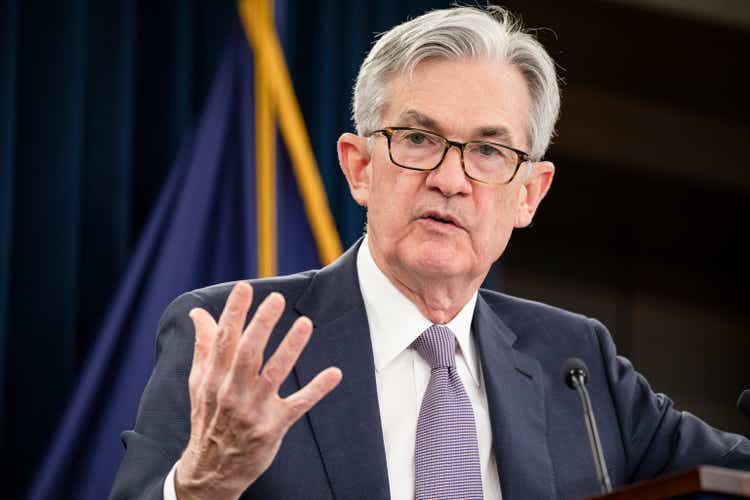Samuel Corum/Getty Images News
This article was originally published March 20, 2022, under Tri-Macro Research.
According to Reuters:
Federal Reserve policymakers have made “excellent progress” on their plan for reducing the central bank’s nearly $9 trillion balance sheet and could finalize details at their next policy meeting in May, Fed Chair Jerome Powell said on Wednesday. Overall, he said, the plan will look “familiar” to when the Fed last reduced bond holdings between 2017 and 2019, “but it will be faster than the last time, and of course it’s much sooner in the cycle than last time. “The Fed will provide more details on the plan’s parameters when it releases minutes of Wednesday’s policy meeting in three weeks’ time, he said.
My whole issue with the Fed is they have consistently, for a decade, procrastinated tightening at even the slightest hint of financial market turbulence. This can be seen in Bernanke not starting the taper in September 2013, followed by Yellen pausing on rate hikes for an entire year in 2016 after the first post-financial crisis hike in December 2015. After that, Powell “pivoted” by stopping rate hikes in 2019, ending the balance sheet run-off early and closing out 2019 doing exactly the opposite by resuming expansion of the balance sheet in response to turbulence in very short-term overnight rates markets and an inverted US yield curve.
I feel the Fed lost track of the dual mandate through emphasizing financial market conditions over price stability, as well as overreacting to early pandemic data and that is why inflation is so high currently in the United States. I do think the Fed will be very successful in lowering inflation through a strong dollar environment, reverse wealth effect on consumer spending and falling asset prices leading to a higher labor force participation rate (reducing the possibility of a wage-price spiral).
I think the Fed is still not tightening fast enough though to make up for years of prolonged low rates mismatched from US economic strength. I’ve held this opinion a long while. Even back in 2016 I was very critical of the Yellen pause. I don’t believe any greater inflationary ramifications of this will be felt in the near-term and US CPI has likely peaked (give or take a couple months data, but in general), though longer-term inflation risk is still elevated and underappreciated, which involves the next round of trades.
The Fed was doing QE with inflation over 6%. Why not a rate hike in January this year and balance sheet runoff in March? Or go with a 50bp hike. There really isn’t much incentive to wait besides not upsetting financial markets. Though if I am right, and tighter financial market conditions such as lower asset prices, higher yields and a strong USD can exert downward pressure on inflation without derailing growth, it should be welcomed and expedited. Though I will also say there is also a difference between what the Fed should do, and what they are likely to do. It’s a fluid situation but there is a definite commitment from the Fed to bring US inflation back down and under control and this is something I have not seen from the Fed before in my years trading.
The FOMC did accelerate the taper though but that is not enough to make up for long-term effects of a decade of procrastination. I don’t think we will see much more acceleration in inflation in the near term and this isn’t the Volcker repeat of the late 1970s early 1980s yet. I don’t think there will be a near-term US recession, just lower asset prices and turbulence in markets. The Fed has every tool to lower inflation but if they continue at such a glacial pace at some point US inflation could truly spin out of control (2 years?) after China and global growth accelerate in the longer-term future.
Again, I don’t think that time is now, and I feel the Fed will be successful in lowering inflation through higher US rates/yields and stronger dollar spilling over into global growth and declining asset prices. But there are always long-term risks including going to slow which could lead to a repeat of Volcker type recessions and high inflation again in the longer-term future. This view supports my current framework I am dealing with, that involves positioning net short now especially in ebullient metals, mining and energy valuations while also keeping an eye for when to flip and go long the same positions on a synchronized global recovery.
I think China’s economy and the direction of that will dictate a lot regarding the timing. Some signs I am looking for to mark a bottom would be China hard-landing and recapitalizing their banks, Japan inflation picking up, Eurozone economic data coming in strong, and emerging market currencies appreciating. Quite simply, we are not seeing this set of outcomes right now and fundamentally there is little impetus for these to occur yet.


Be the first to comment